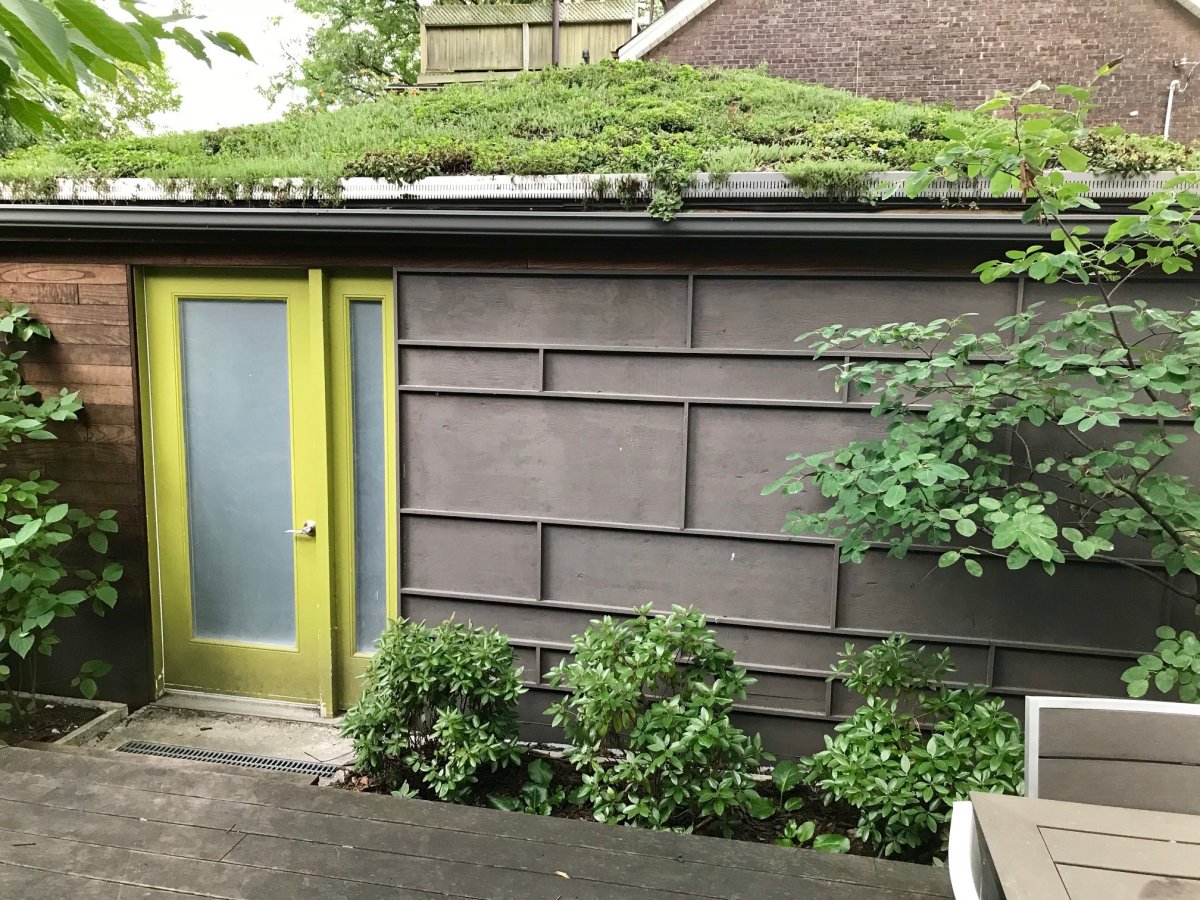What exists in high places, retains water, cools the city and is green all over? How about a green or “living roof”—an energy-saving solution found on many buildings in the GTA and is growing in popularity in the residential sector.

“Green roofs are definitely a growing area of interest with residents— they’re excited about the many benefits green roofs offer and their aesthetic value,” says Annemarie Baynton, program manager with the City of Toronto’s Eco-Roof Incentive Program.
Toronto has played a leading role in North America in developing green roofs as a solution to combat climate change, manage stormwater and help reduce energy consumption.
“Toronto was the first city in North America to introduce a green roof bylaw. It’s a mandatory requirement that all new development install a green roof,” says Baynton. “This came into effect in 2010 and today, Toronto has more than 600 green roofs.”
But what exactly is a green roof and why has the City chosen to mandate its growth and proliferation? Here’s what you need to know.
What is a green roof?
According to the City of Toronto, a green roof is a “roof of a building that is partially or completely covered with vegetation…planted over a waterproofing membrane.”
“A green roof system is an extension of the existing roof which involves several layers including a waterproof membrane, drainage system, a lightweight growing medium (soil), and plants,” says Baynton, noting that common plants found on green roofs include sedums, succulents and other drought and heat-resistant plants that thrive in shallow soil. It’s also possible to use native flowering plants to create much-needed pollinator habitat on a green roof. Birds, bees and butterflies can all benefit from greening rooftops.
Baynton points out that green roofs also work well when partnered with solar panels on a roof.
“The two work hand in hand. You can do a green roof underneath and install the panels overtop,” she says. “The electronic component of the solar panel can work more efficiently thanks to the air around it being cooled from the green roof.”
Why have one?
The benefits to installing a green roof are numerous. According to the National Research Council of Canada, an extensive green roof can lower your energy demand from air conditioning by more than 75 per cent.
The roof also helps absorb sound by as much as 50 decibels.
A more macro look at the effect of green roofs on urban settings includes air cooling. “Cities are warmer because we have more heat-absorbing surfaces and less vegetation when compared to rural areas. Green roofs cool the surrounding air,” says Baynton.
This occurs through a process called evapotranspiration. In the same way sweat cools our skin, the process of evapotranspiration allows for the cooling of a plant’s leaves through the release and evaporation of water.
“Storm water management is another major benefit. Green roofs capture rainwater reducing storm water runoff into the urban environment, which helps reduce the risk of flooding”.
In fact, Green Roofs for Healthy Cities-North America Inc. estimates that in the summer, 70 to 90 per cent of the precipitation that falls on green roofs is maintained while in winter, 25 to 40 per cent of the precipitation that lands is retained.
Worldwide growth
According to the 2016 Green Roofs for Healthy Cities industry survey, Toronto took a top spot for the greatest square footage of green roof installations in North American cities. Other cities installing an increasing number of roofs included followed by Chicago, Washington, D.C. and Seattle.
Over in Europe, The European Federation of Green Roof Associations reports that there was 86 million square metres of green roofs in Germany in 2014 with another eight million added annually. (Germany has the largest number of green roofs within Europe.)
Like Toronto, Germany has changed building policies at the municipal level as well as offered incentives to encourage this kind of growth.

What you should know
If you’re interested in a green roof, there are a few things you should keep in mind starting with the fact that these roofs are most commonly installed on flat roofs.
Maintaining a green roof involves some maintenance like any natural landscape.
“You need to water the plants if it’s been too long without rain. And sometimes you need to weed,” says Baynton.
At minimum, she suggests checking in on the living roof in the spring and fall for routine maintenance, which includes inspecting the drains to see that they’re clear as well.
“But it’s generally recommended to go up at least once a month. This is especially important during the first five years when it’s establishing itself and may be more vulnerable,” adds Baynton.
It’s also best to get such a roof professionally installed rather than build it yourself. To do so, consider the City of Toronto’s Eco-Roof Incentive Program which offers grants to support the building of green roofs. To date, the program has supported over 420 projects, creating over 800,000 square metres of eco-roof space in Toronto (equivalent to about 101 Canadian football fields).


